Replace hoses and pipes if they are damaged
In addition, we recommend replacing hoses after every 60 thousand km or after 3 years of vehicle operation, even if they do not appear to be damaged
The rubber of the hoses ages, and they can suddenly burst when braking.
Replacing the hoses
You will need: wrenches "10", "14", "15", "17", pliers, screwdriver.
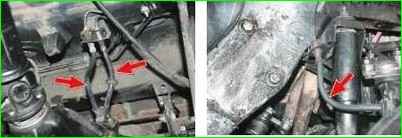
There are four brake hoses used on the car:
- two (rear) - for connecting the pipes on the rear axle housing and two front - for connecting the pipes to the brake cylinders of the front brake mechanisms.
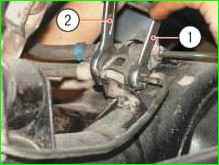
On the rear axle housing, holding the nipple of the rear hose with wrench 2 from turning, unscrew the nut of the pipe with wrench 1 and disconnect it.
To prevent complete If fluid leaks from the hydraulic drive, immediately plug the tube opening in any way possible.
Bleed valve protective caps are very suitable for this purpose.
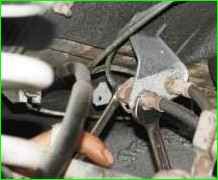
Unscrew the hose mounting nut and remove the hose from the bracket on the body.
Install the new hose in the reverse order of removal.
Replace the second rear hose in the same way.
Do not allow the hoses to twist along the axis.
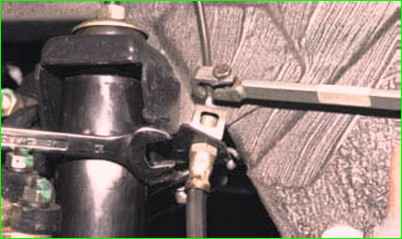
While holding the front hose nipple with a wrench to prevent it from turning, use a brake pipe wrench to loosen the line nut and disconnect it.
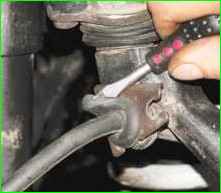
Remove from the bracket rubber seal together with the hose.

Unscrew the hose connecting the pipe to the manifold of the brake cylinders of the front brake mechanism
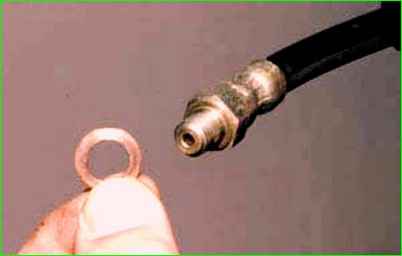
When installing the hose, do not forget to install a copper gasket under the tip attached to the manifold.
Install the new hose in the reverse order of removal.
Replace the second front hose in the same manner.
After replacing the hoses, bleed the brake system (see «Replacing brake fluid Niva Chevrolet»).
Replacing pipelines
The connections of the pipelines with all units of the brake system and hoses are the same.
The design of all pipelines and the principle of their replacement are the same.
The work is shown on the example of a pipeline connecting a tee with a wheel cylinder of the rear brake mechanism.
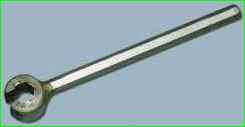
Use special keys to unscrew the pipeline nuts, since the nuts are tightly tightened and usually corroded, as a result of which, when using with ordinary wrenches the edges of the nuts are crushed.
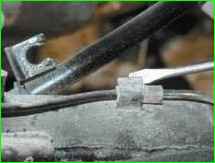
Bend all the pipe fastening brackets
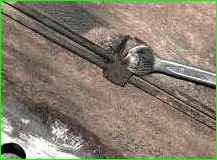
Unscrew the bracket nuts and remove the lines from them.
Unscrew the nuts securing the ends of the lines and remove the line.
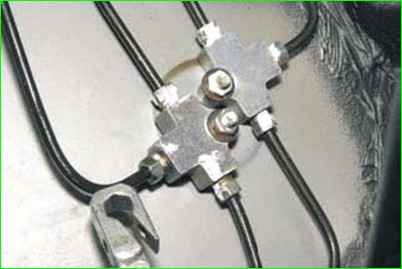
Install the new line in the reverse order of removal.





